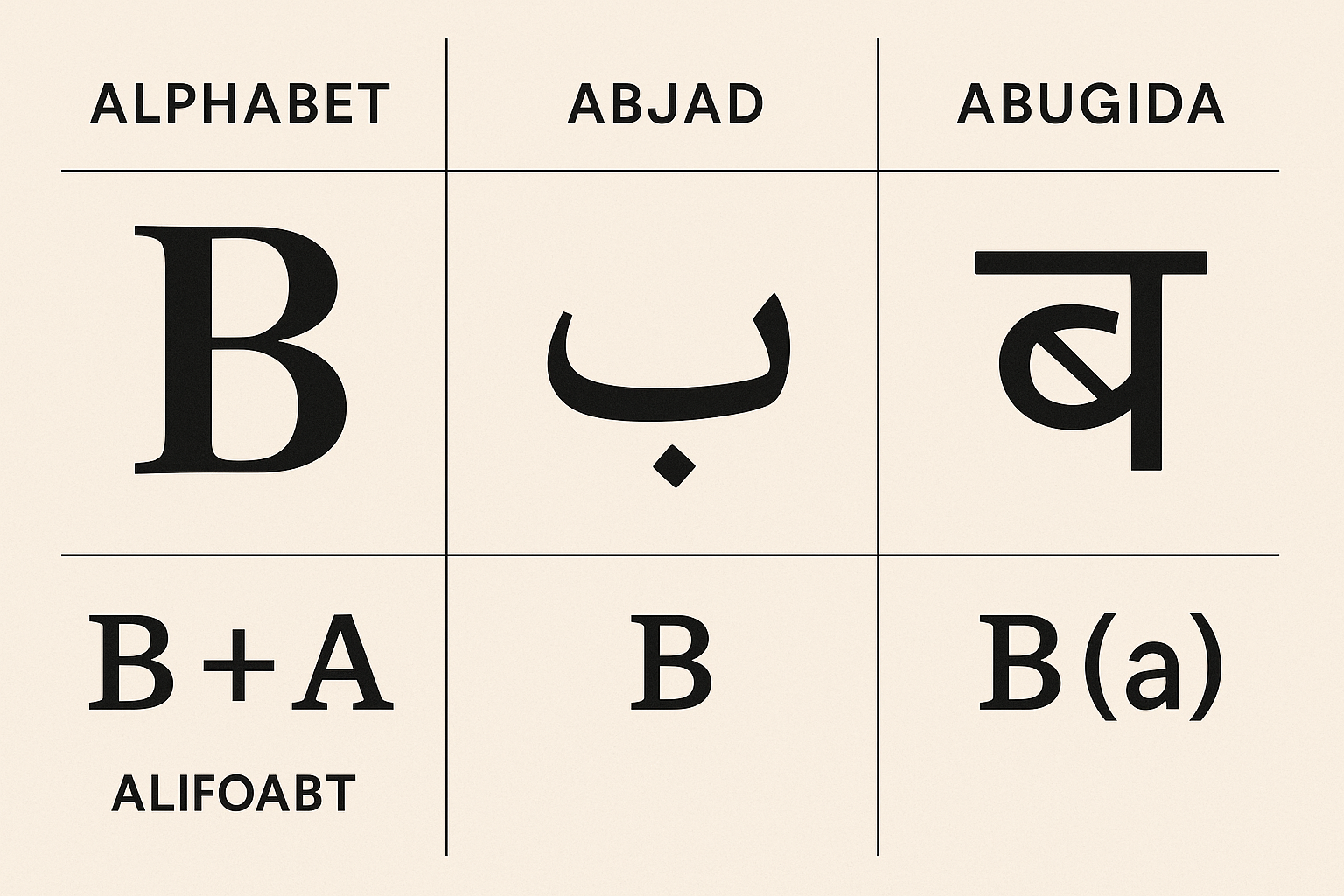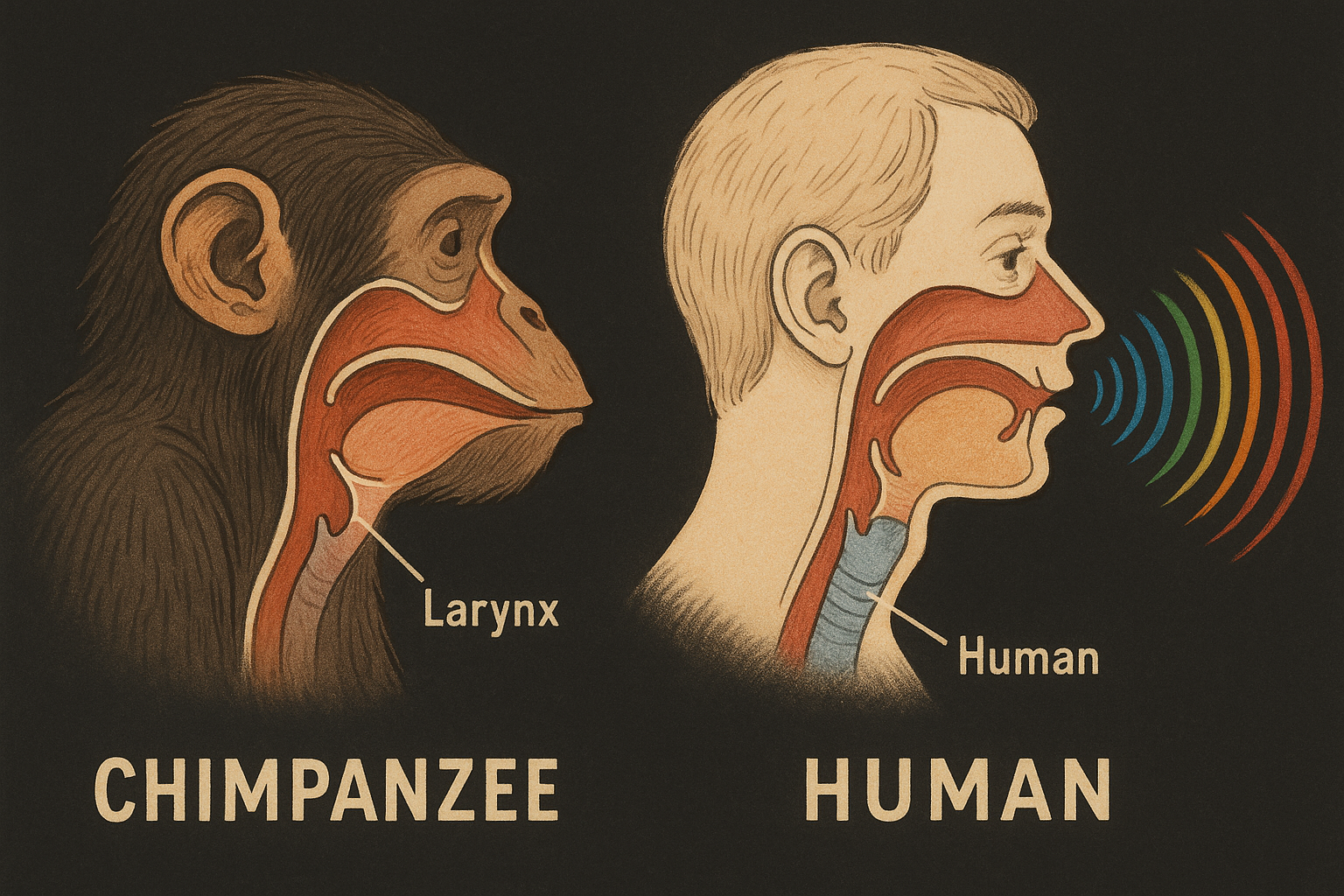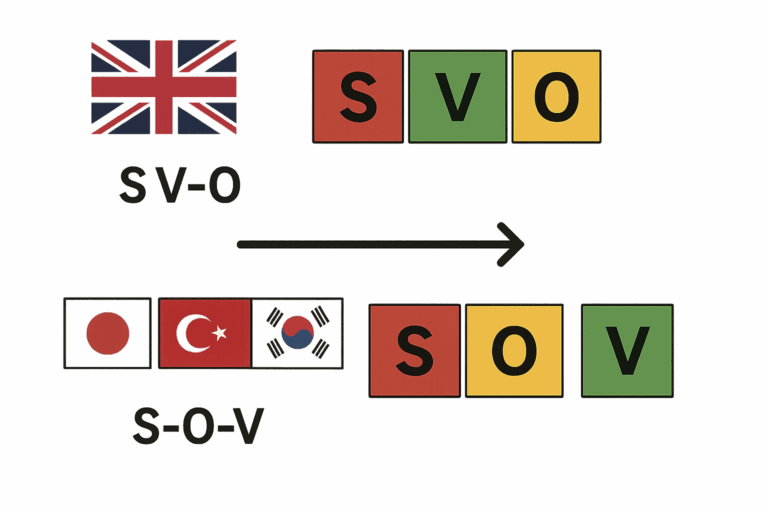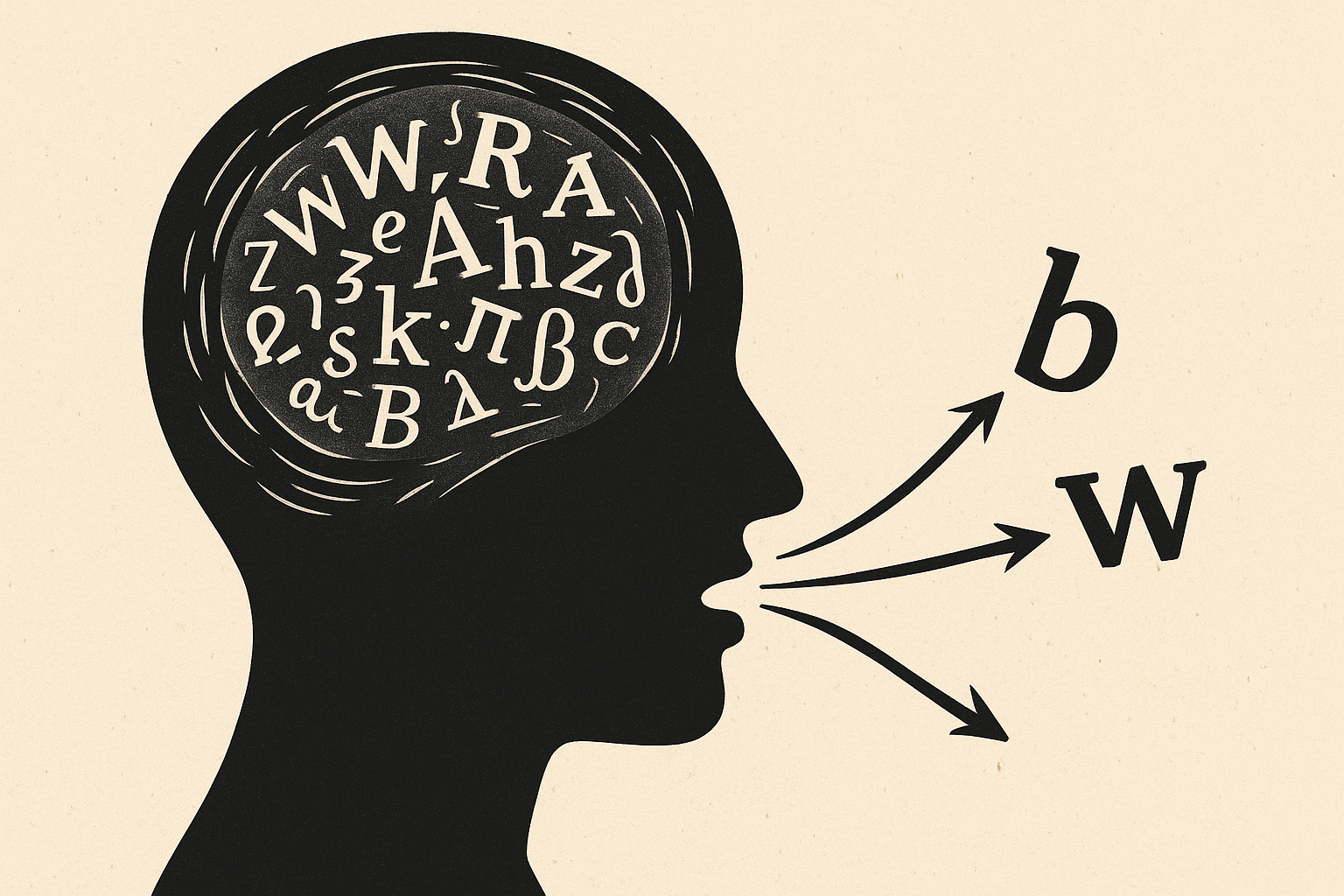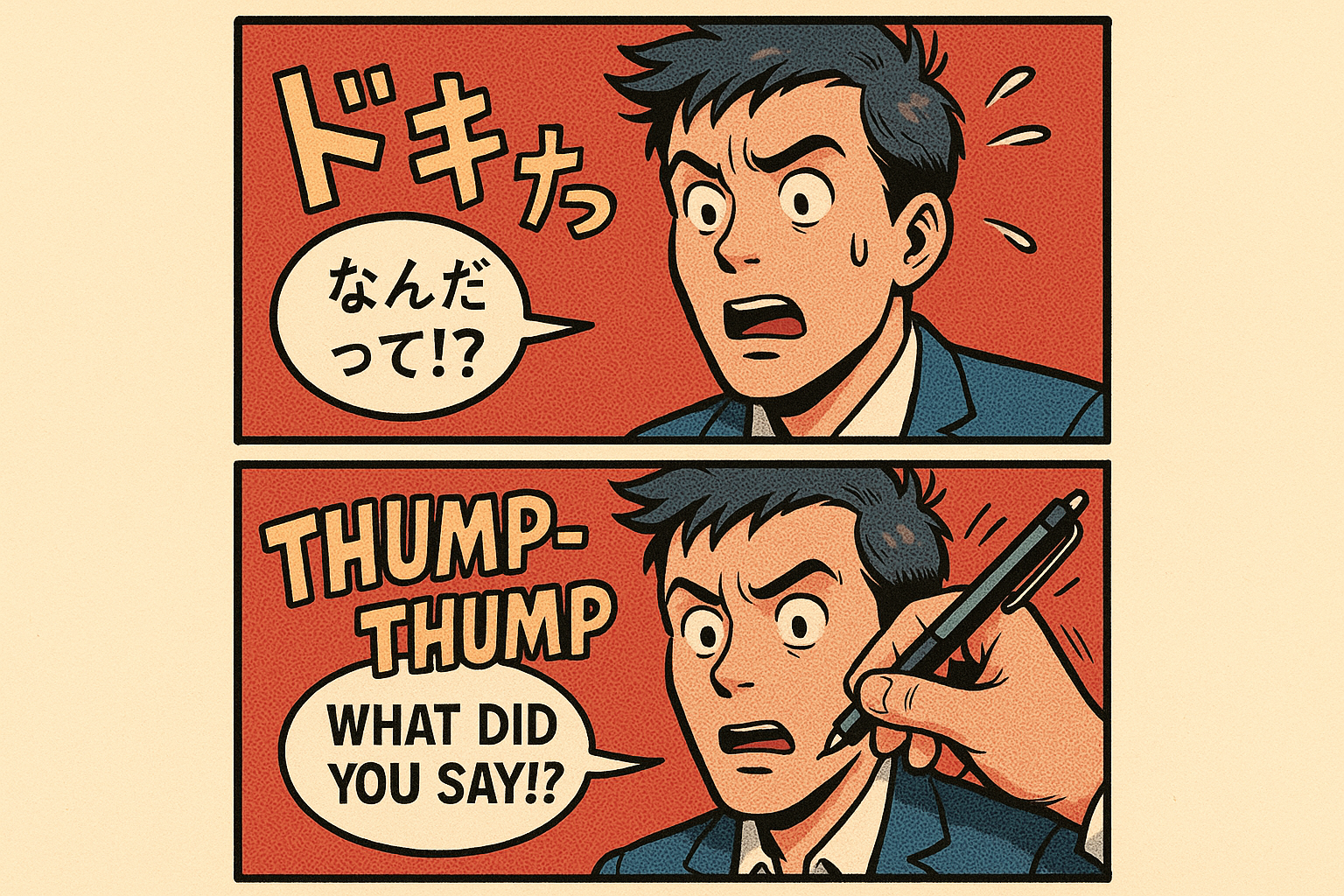When you think of a writing system, you probably picture the alphabet. A for apple, B for ball, C for cat. Each letter represents a sound, either a consonant or a vowel, and we string them together to form words. It’s a beautifully simple, one-to-one system that has served English and many other languages for centuries. But to assume this is the only—or even the best—way to write would be like assuming every house must be built with the same blueprint.
The world is brimming with scripts that operate on entirely different principles, brilliantly tailored to the sounds and structures of the languages they represent. Today, we’re pulling back the curtain on two of the most widespread and fascinating alternatives to the alphabet: abjads and abugidas. Get ready to have your understanding of writing turned on its head.
The Abjad: Writing the Consonantal Skeleton
Imagine reading this sentence: “MST PPL CN RD THS WTH LTTL DFFCLTY.”
You probably figured it out: “Most people can read this with little difficulty.” Your brain, using context and experience, filled in the missing vowels. This is the fundamental principle behind an abjad, a writing system where the primary graphemes (or letters) represent consonants, and vowels are either omitted or indicated with optional secondary markings called diacritics.
The most famous abjads are used for Semitic languages like Arabic and Hebrew. This isn’t a coincidence; these scripts are perfectly engineered for the way these languages work. Semitic languages are built on a “root and pattern” system. A core root, typically of three consonants, carries the basic semantic meaning. Vowels are then slotted in between these consonants to create different words and grammatical forms.
Let’s take the Arabic root K-T-B (ك-ت-ب), which relates to the concept of “writing.”
- KaTaBa (كَتَبَ) – “he wrote”
- yaKTuBu (يَكْتُبُ) – “he writes”
- KiTāB (كِتَاب) – “book”
- KuTuB (كُتُب) – “books”
- KāTiB (كَاتِب) – “writer”
Notice how the consonants ك (k), ت (t), and ب (b) form an unchanging skeleton. For a native speaker, this skeleton provides more than enough information. The context of the sentence makes it clear whether you’re talking about a writer, a book, or the act of writing. It’s an incredibly efficient system. Why waste ink on vowels when the meaning is already clear from the consonants?
Of course, vowels aren’t completely ignored. For learners, poetry, or sacred texts like the Qur’an and the Hebrew Bible, small diacritics can be added above or below the consonants to specify the exact vowel sound. In Arabic, these are marks like the fatḥa (for a), kasra (for i), and ḍamma (for u). In everyday writing, however—newspapers, websites, novels—they are almost always left out.
The Abugida: The Inherent Vowel Unit
If abjads represent one logical extreme (consonants first), then abugidas occupy a fascinating middle ground between abjads and alphabets. Also known as alphasyllabaries, abugidas are the dominant writing systems throughout South and Southeast Asia (e.g., Devanagari for Hindi/Sanskrit, the Thai script, the Burmese script) and Ethiopia.
The core concept of an abugida is this: each character represents a consonant that carries an inherent, default vowel. In most Indic scripts, this inherent vowel is a short ‘a’ sound, as it is the most common vowel in those languages.
Let’s look at Devanagari, the script used to write Hindi, Marathi, and Sanskrit. The base character क isn’t just the sound ‘k’. It’s the full syllable ‘ka’. This is the default. You don’t need to add anything for the ‘a’ sound; it’s built-in.
So, how do you write other vowels? You modify the base character with diacritics. These aren’t optional like in an abjad; they are a fundamental part of the script. Watch how ‘ka’ (क) transforms:
- To make ‘ki’ (as in “kit”), you add a stroke to the left: कि
- To make ‘ku’ (as in “put”), you add a hook underneath: कु
- To make ‘ke’ (as in “keg”), you add a slash on top: के
- To make ‘ko’ (as in “coke”), you add a vertical line and a slash: को
This is a brilliant system for languages where syllables are predominantly a simple consonant-vowel (CV) structure. You write one core symbol per syllable and only add a small mark if the vowel is something other than the default ‘a’. It’s visually compact and phonetically logical.
But what if you just want the ‘k’ sound alone, without any vowel? Abugidas have a clever solution for this: a special diacritic known as a virama or halant. In Devanagari, it’s a small diagonal stroke underneath (क्). This mark “kills” the inherent vowel, allowing you to create consonant clusters. For example, to write the Hindi word namaste (नमस्ते), you combine न (na), म (ma), स् (s with virama), and ते (te). The virama on ‘s’ links it to the following ‘te’ syllable, creating the ‘st’ cluster.
Alphabet, Abjad, Abugida: A Quick Comparison
To put it all together, let’s see how the three systems treat a hypothetical consonant ‘K’ and vowel ‘A’.
- Alphabet (e.g., Latin): Consonants and vowels are separate, co-equal letters. You write K and A.
- Abjad (e.g., Arabic): The primary letter is for the consonant. You write K, and the ‘a’ is either inferred from context or marked with an optional diacritic.
- Abugida (e.g., Devanagari): The base character is a consonant-vowel unit. The symbol for Ka is the default. To get just ‘K’, you must add a vowel-killing mark.
Why Does This Matter?
Stepping outside the familiar comfort of our alphabet reveals a profound truth: a writing system is not a neutral container for a language. It is a piece of high-precision technology, exquisitely evolved to fit the unique phonology and morphology of the language it serves. An abjad is the perfect tool for a language built on consonantal roots. An abugida is a streamlined machine for a language rich in consonant-vowel syllables.
The Latin alphabet, with its distinct letters for vowels, works wonderfully for English, a language where vowels are unpredictable and crucial for distinguishing words like pin, pan, pen, and pun. But for Arabic or Hindi, our system would be clunky and inefficient.
So the next time you see text in Arabic, Hebrew, Thai, or Hindi, don’t just see foreign squiggles. See a different kind of logic—an elegant, efficient solution to the universal human challenge of putting sound to paper.
